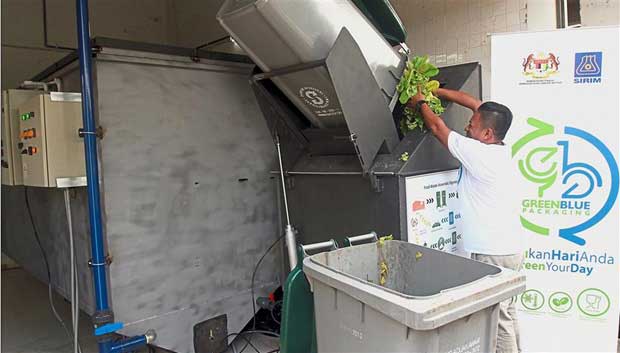The Melaka government is planning to create the best mechanism to solve the problem of organic waste disposal in the state that can lead to the global warming.
Chief Minister Datuk Seri Idris Haron says “We are proud to be the first state in Malaysia to provide green house gas emissions inventory and implement an action plan to resolve climate change. The switch to new energy sources is progressing well and it would indirectly contribute to mitigate the effects of climate change.
“For a start, the Hang Tuah Jaya Municipal Council will use an environmentally-friendly method using recycling technology and compost waste management to solve the problem of air pollution at the waste disposal site”
said housing, environment and local government committee chairman Datuk Ismail Othman
Turning waste into a sustainable source of fuel for cooking while helping to grow plants is no longer a dream when Hang Tuah Jaya Municipal Council (MPHTJ) and Dr Mohamad Jamil Sulaiman, sirim Berhad vice president and Industrial Research are working together to introduce a green technology called Anaerobic Digestion System (ADS).

Datuk Ismail Othman said ADS could help lessen greenhouse gas emissions that contribute to global warming as well as reduce the need for additional landfills in the state.
“Studies show the system generates less greenhouse gases. A high concentration of methane gas from existing landfills is one of the major causes of global warming,” he said .
Ismail said biogases, generated from ADS, could be used as fuel as well as fertiliser for plants.
He said the system, which was safe and cheap, could begin operating on a large scale by 2020.
He said Melaka was planning to set up more ADS facilities at areas where it is the source of generation of food wastes.
With the system here in Melaka, food wastes will be properly segregated and processed to produce biogas and bio fertilisers.
The biogas will then be channeled directly to the kitchen of the food court
The machine, at a size of 4.5m X 8m X 20m, is able to able to process 500 kilograms of food wastes each time.
For every 500 kilograms of food wastes processed, 20 percent of it would be bio fertilisers.
At the same time, it can either produce five kilowatt-hours (kWh) of energy or allow gas consumption for 20 traders
It is estimated that in 10 years’ time, the anaerobic digestion system could save the cost in waste management and reduce the effects of greenhouse gasses by RM4.6million.
Melaka also encourage food traders to pack food in biodegradable containers, Green Blue (GB) packaging which will reduce the usage of conventional packaging as well as cutlery.

Why is processing food scraps through anaerobic digestion the best way to handle food waste?

“The one thing that sets anaerobic digestion (AD) apart is it’s ability to scale up. Usually the larger AD systems are the most profitable. This works well in urban areas, where there are lots of people and therefore lots of food waste.
The other big advantage anaerobic digestion has is that it produces renewable energy in addition to a great soil amendment. In settings where you have a lot of food waste to recycle, you probably also have many ways to use that renewable energy, whether it’s in the form of electricity, vehicle fuel, heat or just renewable natural gas injected pipelines.
It’s hard to find land in many urban areas for 100-300 tons per year of food waste to be composted. But a few big AD tanks will take care of that handily. Also, AD systems that handle food waste are inherently better at capturing odors, due to the use of closed tanks. This contrasts with the open-air nature of composting facilities. Of course, both kinds of systems can be operated well, so odor is contained and also both can be operated or designed poorly, creating noxious odors, but usually AD systems are going to be better and more reliable at containing odor.
said Patrick Serfass, Executive Director, American Biogas Council on the interview with WasteDive



Leave a Reply